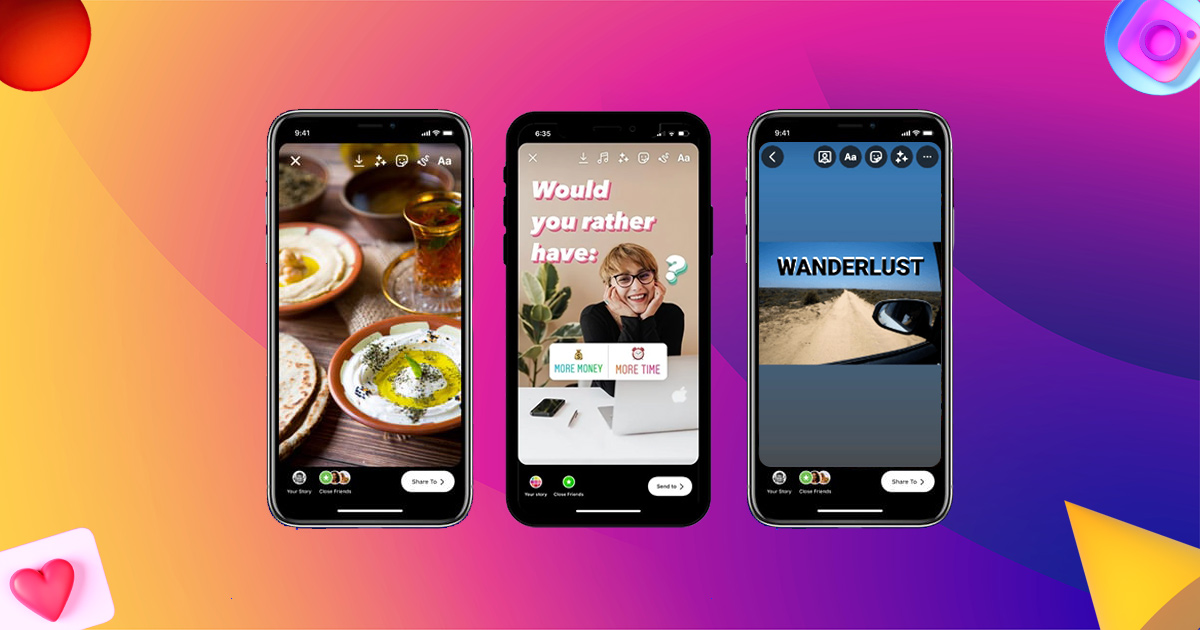How to Schedule Instagram Stories in 3 Easy Steps
Learn how to schedule Instagram Stories easily with these simple steps. Save time, stay consistent, and boost your content strategy!
Justin| 10 Oct 2024

Table of Content
- Do more with Storefries!
- Why Schedule Instagram Stories?
- Can you Schedule Instagram Stories?
- Step 1: Choose the Right Scheduling Tool
- Step 2: Create engaging content for your story
- Step 3: Schedule and Monitor Your Stories
- Best Practices for Scheduling Instagram Stories
- Conclusion
- Related Posts
- Leave A Comment Cancel reply
In today’s rapidly changing digital world, Effective management of social media content is critical to maintaining an active online presence. Instagram Stories have emerged as an effective way to engage with your audience. Promote products and update your followers.
However, manually tracking your posts every day can be tiring. That’s where scheduling Instagram Stories saves you time and helps you stay consistent.
In this detailed guide, We’ll walk you through scheduling Instagram Stories in 3 easy steps to simplify your workflow and optimize your content strategy.
Why Schedule Instagram Stories?
Before diving into the steps, let’s understand why scheduling Instagram Stories can be a game-changer for your social media strategy. Scheduling Stories allows you to:
- Save time by batching your content creation.
- Maintain consistency in posting, which helps improve engagement rates.
- Post at optimal times when your audience is most active.
- Reduce stress and improve content quality by planning in advance.
Now, let’s move on to the step-by-step guide on how to schedule your Instagram Stories.
Can you Schedule Instagram Stories?
The most! As with scheduling Instagram posts, there are free ways to schedule Instagram stories:
Basically – through Meta Business Suite.
Using a Third-Party IG Scheduler – With a social media management tool like Hootsuite, Buffer, or later, accessible via desktop or mobile app.
Step 1: Choose the Right Scheduling Tool
How to Schedule Instagram Stories Using Meta Business Suite
You can easily schedule Instagram Stories natively through Meta Business Suite (previously Facebook Business Suite).
How to Schedule Instagram Stories on Desktop
Step 1: From the Meta Business Suite homepage, click on the Create Story button located on the right side.
Step 2: In the “Share to” field, select your Instagram page to ensure the Story is posted there.
Step 3: Click Add photo/video to upload the media you want to schedule from the Media section.

Optional: You can edit your Story by using the Edit option.
Step 4: Hit the Schedule button to schedule your Story for a later time.
That’s it! Your Story is now scheduled. To view or make edits, navigate to the Calendar on the left bar, and select the Scheduled tab.
How to Schedule Instagram Stories on Mobile
Step 1: Tap on Story.
Step 2: Upload your media (photos or videos). You can also select multiple images at once.
Optional: Customize your Story by adding text, stickers, GIF, etc. Adjust their size and position as needed.
Step 3: Press Next to continue.
Step 4: Choose where your Story will appear, such as your Facebook Page, Instagram account, or both.

To schedule the Story for later, select Schedule for later, then set the desired date and time. Confirm by tapping Done on iOS or Schedule on Android.
And that’s it! Your Instagram Story is now scheduled. To view your scheduled or published Stories, go to Posts & Stories and then click on Calendar.
If needed, you can reschedule your Stories on both desktop and mobile if you change your mind.
Step 2: Create engaging content for your story
Story scheduling is only effective if you post content that resonates with your audience. Here’s how you can create Instagram Stories that capture attention and drive engagement:
1. Use high-quality images and videos.
Instagram is a platform with high visibility. Therefore, it is important to use high-quality images and videos. Blurry or poorly lit media can detract from your message and cause viewers to lose interest. To make sure your content stands out:
- Use bright, well-structured images.
- Include brand colors to maintain consistency.
- Try using a dynamic video boomerang to increase engagement.
2. Includes interactive elements
Instagram Stories offers many interactive tools that can help you connect with your audience. Use features like:
- Polls: Get instant feedback from your followers on various topics.
- Question mark: Encourages listeners to ask questions or share their thoughts.
- Countdown Stickers: Create excitement for a product launch, event, or special promotion.
Adding these interactive elements doesn’t just increase engagement. But it also keeps your followers coming back for more.

3. Write compelling copy
Creating the right headline is just as important as the image. Make sure you have the message:
- Short and to the point: Instagram Stories disappear after 24 hours, so get your message out quickly.
- Actionable: Use a clear call to action (CTA) like “Swipe up” or “Tap to see more” to encourage interaction.
- For brands: Make sure the tone of your description is consistent with your overall brand tone.
Once you’ve created your content You are now ready to schedule.
Related Blog: How to See Old Stories on Instagram
Step 3: Schedule and Monitor Your Stories
With your content prepared, the final step is scheduling your Instagram Stories using the chosen tool. Here’s how you can do it:
1. Upload and Arrange Your Stories
After creating your content, upload the images and videos to your scheduling tool. Most tools allow you to rearrange the order of your Stories by simply dragging and dropping them. Make sure to:
- Order your Stories logically to tell a compelling narrative.
- Preview the entire Story sequence to ensure it flows smoothly.
2. Set the Time and Date
It’s essential to post your Stories when your audience is most active. Many scheduling tools provide analytics to help you identify the best times to post. Once you’ve determined the optimal time, schedule each Story accordingly:
- Set the exact time and date for each Story.
- Plan ahead: Schedule your Stories at least a week in advance to maintain a consistent posting schedule.
3. Monitor Performance
Once your Stories are live, it’s important to monitor their performance to understand what works best for your audience. Most scheduling tools come with analytics features that provide insights into:
- Views and reach: How many people saw your Story?
- Engagement: Did users interact with the polls, stickers, or CTAs?
- Completion rate: How many people viewed your Story from start to finish?
Analyzing these metrics will help you refine your content strategy and improve future Stories.
Best Practices for Scheduling Instagram Stories
To ensure your Instagram Stories scheduling is successful, follow these best practices:
1. Post Regularly
Consistency is key. Posting regularly will keep your audience engaged and increase your visibility on the platform.

2. Use Hashtags and Location Tags
Although you’re scheduling Stories, don’t forget to include hashtags and location tags. This can increase the reach of your content by making it discoverable to a broader audience.
3. Adapt Based on Analytics
Always use the insights from your Story performance to improve. If certain types of Stories receive more engagement, focus on creating similar content.
Related Blog: Instagram bio ideas
Conclusion
Scheduling Instagram Stories is an effective way to improve your social media efforts, save time, and ensure consistency. By following three simple steps As summarized in this guide
Choosing the Right Tool Creating interesting content And by scheduling and tracking your stories.
You can optimize your Instagram strategy and increase engagement. With a little planning You can focus on other areas. of your business and maintain a strong online presence







Leave A Comment